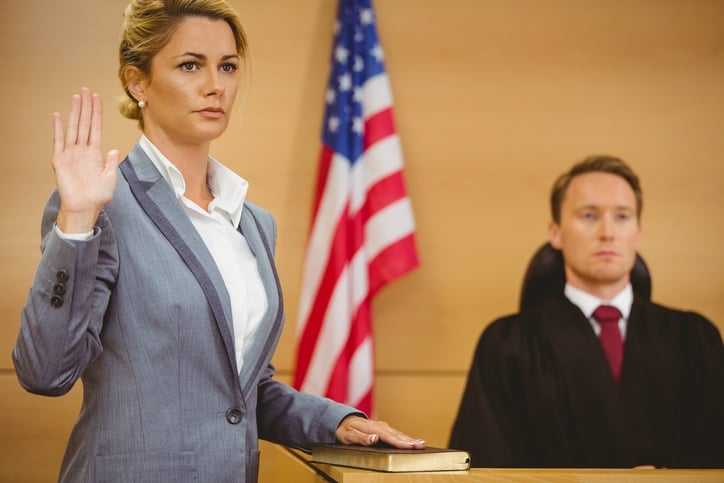by Tony Klapper
(former) Managing Director, Litigation Consulting
A2L Consulting
In my last post, I talked about the fact that an expert witness needs to express her expertise in a convincing way – but also in a way that the typical juror can understand and not in the language of a specialist.
The next step in becoming a truly effective expert witness is to understand the power and the importance of visual learning.
It’s a safe bet that your peer-reviewed articles contain tens of thousands of words. Your academic poster contains hundreds, maybe thousands, of words. Your PowerPoint presentations delivered to your peers contain bullet point after bullet point of words (and maybe a smattering of cartoons).
Ask yourself: How many television commercials convey the importance of the advertised product through words? How many magazine advertisements do the same through words? How many movies convey their story through words? How many architects explain their designs through words? How many patents have no pictures and just words? And how many biology textbooks have no illustrations and just words? In all these instances, the visual is what matters.
Studies have shown that two-thirds of jurors learn primarily through visual means. And the need for visuals becomes even greater when the information being conveyed is highly complex. That does not mean that you should simply rely on Excel charts, images of equations, and chemical formulas to convey your points. It means that you should consider incorporating litigation graphics as demonstrative evidence for your opinion testimony.
Explaining with 2D animation in PowerPoint how the mucociliary escalator removes inhaled particles from the body is far more effective than just talking about it. Describing through an interactive timeline the complex series of steps that were employed to design and build a consumer product is far more effective than just talking about it. And demonstrating through high-quality photographs and well-placed arrows that the key component of your client’s widget looks nothing like the component claimed in the allegedly infringed patent is far more effective than just talking about it.
When working with counsel to prepare your direct examination, you should demand that time be spent not just on what you are going to say but also on how to present it visually. If possible, find opportunities to leave the witness stand and demonstrate your point with physical evidence, or draw a picture on the flip chart. The more you are the teacher and not the talking head, the more likely the jury will connect with you and find you credible.
In our next post, we will discuss the proper state of mind for the testifying expert.
Other articles from A2L Consulting discussing the importance of visual learning, PowerPoint, and expert witness testimony:
- How to Be a Great Expert Witness (Part 1)
- Storytelling at Trial Works - But Whom Should the Story Be About?
- 7 Ways to Overcome Cognitive Bias and Persuade
- 16 PowerPoint Litigation Graphics You Won't Believe Are PowerPoint
- What is Visual Persuasion and What Do You Need to Know About It?
- Free 144 page A2L E-book download: Storytelling for Litigators
- Free A2L webinar - Storytelling as a Persuasion tool
- One Possible Pitfall in Telling a Story at Trial
- Dan Pink, Pixar, and Storytelling for the Courtroom
- $300 Million of Litigation Consulting and Storytelling Validation
- 20 Great Courtroom Storytelling Articles from Trial Experts
- Storytelling Proven to be Scientifically More Persuasive
- 5 Essential Elements of Storytelling and Persuasion
- 21 Reasons a Litigator Is Your Best Litigation Graphics Consultant
- 14 Differences Between a Theme and a Story in Litigation
- Your Trial Presentation Must Answer: Why Are You Telling Me That?
- Are You Smarter Than a Soap Opera Writer?
- Conflict check: Be the first to retain A2L






Leave a Comment